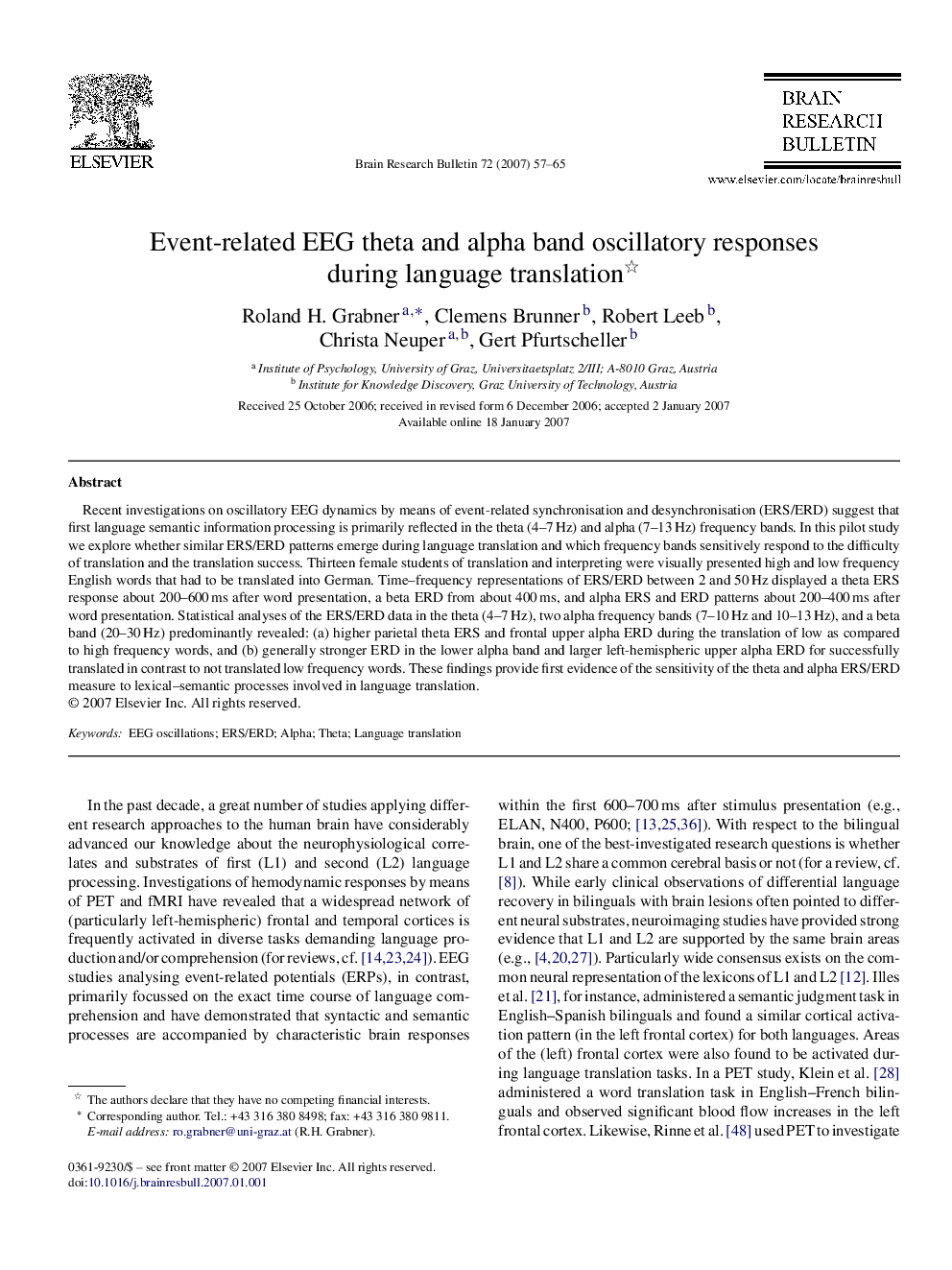| Article ID | Journal | Published Year | Pages | File Type |
|---|---|---|---|---|
| 6262209 | Brain Research Bulletin | 2007 | 9 Pages |
Recent investigations on oscillatory EEG dynamics by means of event-related synchronisation and desynchronisation (ERS/ERD) suggest that first language semantic information processing is primarily reflected in the theta (4-7Â Hz) and alpha (7-13Â Hz) frequency bands. In this pilot study we explore whether similar ERS/ERD patterns emerge during language translation and which frequency bands sensitively respond to the difficulty of translation and the translation success. Thirteen female students of translation and interpreting were visually presented high and low frequency English words that had to be translated into German. Time-frequency representations of ERS/ERD between 2 and 50Â Hz displayed a theta ERS response about 200-600Â ms after word presentation, a beta ERD from about 400Â ms, and alpha ERS and ERD patterns about 200-400Â ms after word presentation. Statistical analyses of the ERS/ERD data in the theta (4-7Â Hz), two alpha frequency bands (7-10Â Hz and 10-13Â Hz), and a beta band (20-30Â Hz) predominantly revealed: (a) higher parietal theta ERS and frontal upper alpha ERD during the translation of low as compared to high frequency words, and (b) generally stronger ERD in the lower alpha band and larger left-hemispheric upper alpha ERD for successfully translated in contrast to not translated low frequency words. These findings provide first evidence of the sensitivity of the theta and alpha ERS/ERD measure to lexical-semantic processes involved in language translation.
